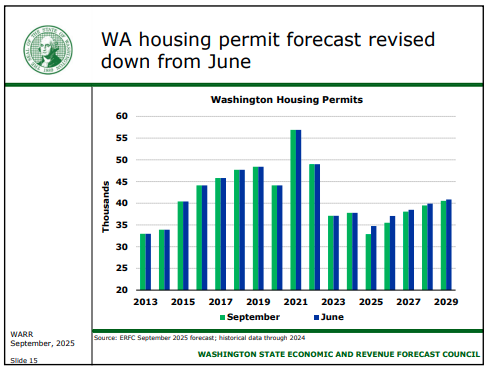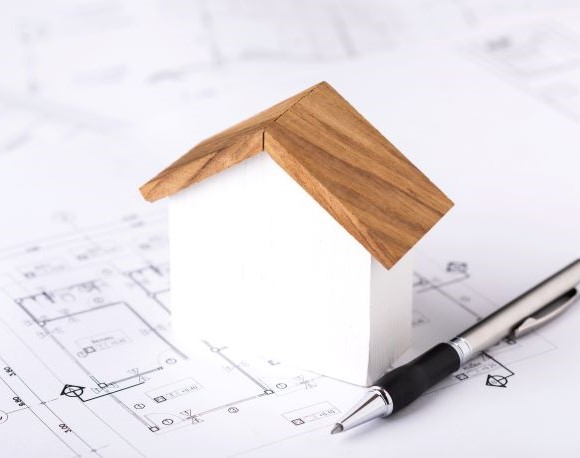October 10, 2025

Washington state has a new revenue forecast, and it shows an almost $900 million budget deficit headache for Olympia lawmakers. A major factor in the dip is the struggling residential construction sector, with building permits projected to be at their lowest level since 2013.
Yes, the revenue forecast has decreased, but overall revenue is still projected to increase each biennium. So, while the legislature will need to address the forecasted deficit, overall they will still have access to more revenue than in past biennia.
Addressing a budget deficit typically involves either cutting the budget or raising taxes. When faced with a deficit this year, the legislature and the Governor opted to both increase overall spending and pass the largest tax increase in state history.
How policy changes would help fill the gap
The legislature will likely repeat this strategy to address the new $889 million deficit, but a deeper dive into the forecast highlights how policy changes to improve residential construction can help fill the gap.

The forecast finds that residential construction activity decreased in August.
- Housing starts fell 6% since August 2024.
- Housing units authorized by building permits decreased 11.1% from 2024.
- New home sales fell 8.2% below their 2024 level.
- Existing home sales increased only by 0.8% since 2024.
- Employment data showed the construction sector shed 1,400 jobs over the summer.
- This dip in housing activity caused a drop in forecasted collections for the real estate excise tax (REET), contributing to 18% of the total revenue decrease.

However, REET is not the only revenue source affected by residential construction.
- The report also shows a more than $250 million reduction in sales tax revenue. While sales taxes for residential builders are a bit complicated, they do indeed pay sales taxes.
- In addition, builders pay gas taxes on fuel used to transport workers and materials to and from jobsites.
- Builders also pay more than their fair share of the revenue used to support the State Building Code Council through building permit fees.
- The business and occupation (B&O) tax collections were shown to increase, likely from tax increases passed by the legislature. But a drop in residential construction could also impact B&O revenues.
18% of revenue slump due to residential construction
These revenue changes show that a slump in residential construction is contributing to at least 18% (and likely higher) of the $889 million projected revenue decrease.
While the legislature will still need to consider budget adjustments and will likely decide to consider tax increases as well, there are other options available to help bridge the divide. The legislature could also consider policies that will support the sector and spur growth.
Builders face various local and state regulatory barriers and fees that increase costs and restrict design choices, making it infeasible to build high-volume starter homes at low cost. Hopefully, we will soon begin to see progress from recent changes to state law.
However, the legislature can expand on those improvements by:
- Ensuring local jurisdictions reduce permitting delays, which cause significant cost increases and barriers;
- Passing legislation adjusting the Growth Management Act (GMA) to increase land availability, which is a major factor behind our housing crisis; and
- Addressing the myriad of other regulatory costs on housing production, such as ineffective energy code requirements and impact fees.
We know that a strong residential construction industry will not only help reduce the housing crisis but also increase state revenues, a win-win for Washingtonians.








